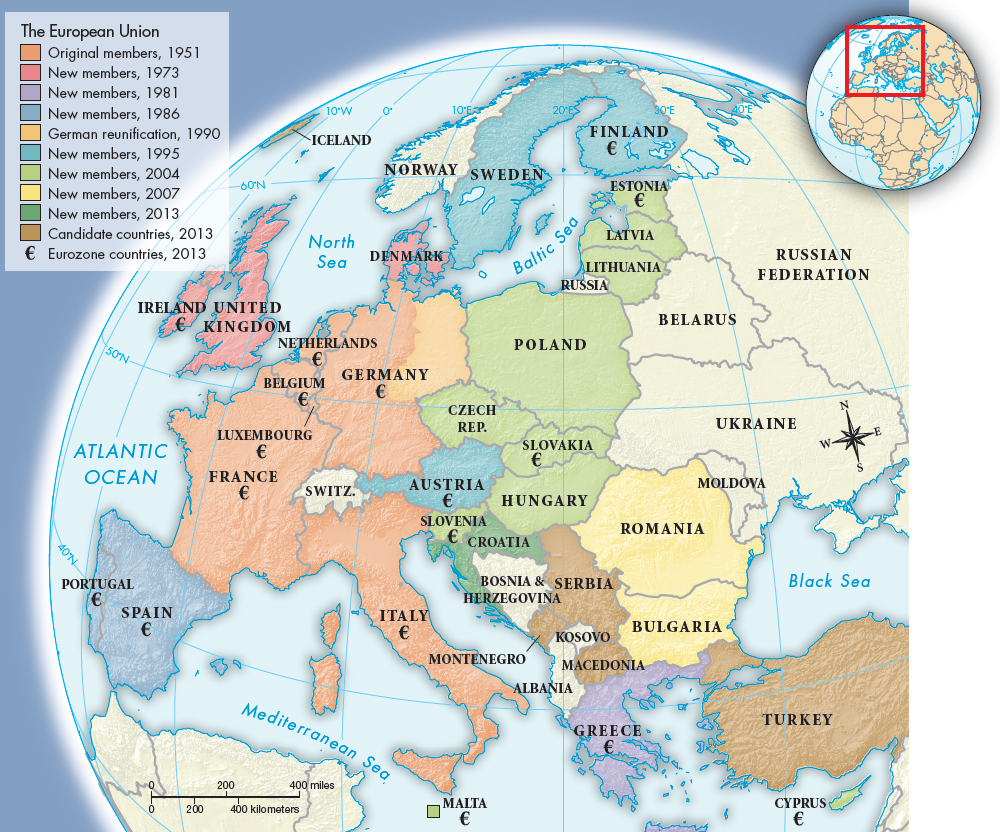Understanding Western Society
Printed Page 961
The New European Union
Global economic pressures encouraged the expansion and consolidation of the European Common Market, which in 1993 was renamed the European Union (EU) (Map 30.3). The EU worked to add the free movement of European labor, capital, and services to the existing free trade in goods. In addition, member states sought to create a monetary union in which all EU countries would share a single currency. Membership in the monetary union required states to meet strict financial criteria defined in the 1991 Maastricht Treaty.
While western European elites and opinion makers generally supported the economic integration embodied in the Maastricht Treaty, support for the Maastricht Treaty was not universal. Many people resented the EU’s ever-
Above all, many citizens feared that the European Union was being created at their expense. Joining the monetary union required national governments to meet stringent fiscal standards, impose budget cuts, and contribute to the EU operating budget. The resulting reductions in health care and social benefits hit ordinary citizens and did little to reduce high unemployment. When put to the public for a vote, ratification of the Maastricht Treaty was usually very close. Even after the treaty was ratified, battles over budgets, benefits, and high unemployment continued throughout the EU in the 1990s.

CONNECTIONS: Which countries are and are not part of the Eurozone, and what does this suggest about how successful the European Union has been in adopting the euro?
Then in 2002, the euro replaced the national currencies of all Eurozone countries. The establishment of the European monetary union built confidence in member nations and increased their willingness to accept new members. On May 1, 2004, the European Union began admitting its former East Bloc neighbors, and by 2007, the EU was home to 493 million citizens in twenty-
This rapid expansion underscored the need to reform the EU’s unwieldy governing structure. In June 2004, a special commission presented a new EU constitution that represented a significant step toward a more centralized federal system, though each state retained veto power over taxation, social policy, foreign affairs, and other sensitive areas. After many contentious referendum campaigns across the continent, the constitution failed to win the unanimous support required to take effect. Ultimately, nationalist fears about losing sovereignty and cultural identity outweighed the perceived benefits of a more unified Europe.
Though the constitution did not go into effect, the long postwar march toward greater European unity did not stop. In 2007, the rejected constitution was replaced with the Treaty of Lisbon. The new treaty kept many sections of the constitution but further streamlined the EU bureaucracy and reformed its political structure. When the Treaty of Lisbon went into effect on December 1, 2009, after ratification by all EU states, it capped a remarkable fifty-